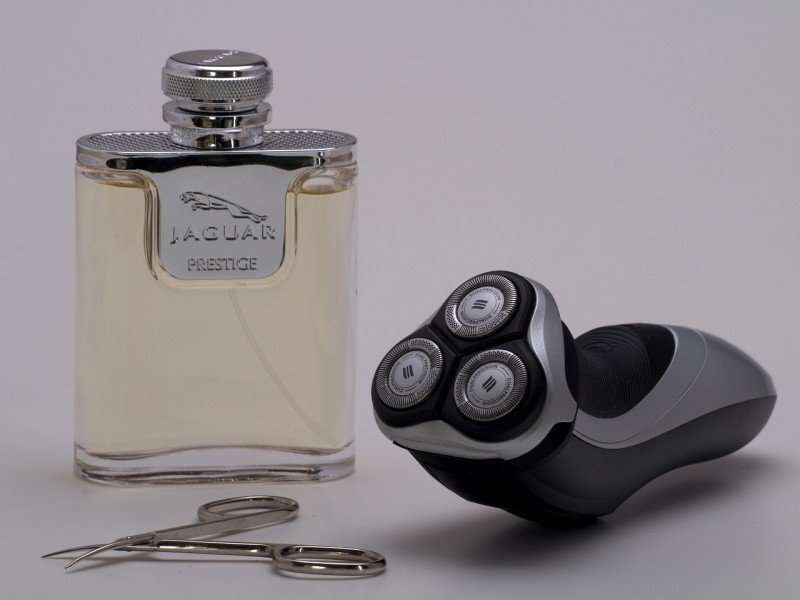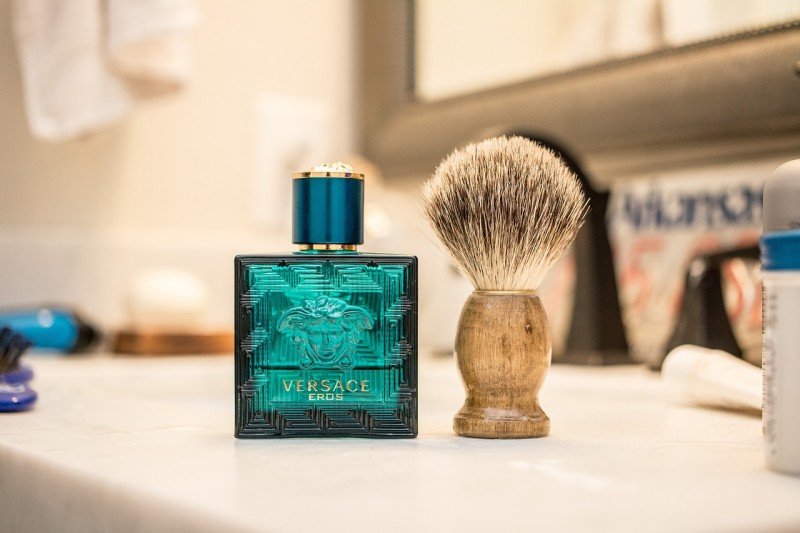Did you know that 75% of men aren't sure if razor blades expire? If you're part of that majority, you're not alone. It's a common question.
In this article, we'll delve into the lifespan of razor blades, breaking down the nitty-gritty of their expiration dates. We'll help you understand when it's time to toss them out and how to properly store them to enhance their shelf life.
Key Takeaways
- Razor blades do not have printed expiry dates, but understanding their effective use-by period is crucial to avoid skin irritation and infections.
- Factors such as blade material quality and storage conditions impact the expiration of razor blades.
- The frequency of use and regular maintenance of razor blades can also affect their expiration.
- Grooming tools, including electric razors, manual razors, toothbrushes, hairbrushes, and combs, all have expiration dates based on their quality, usage, and maintenance. Regular replacement of toothbrushes is recommended.
Understanding Razor Blade Shelf Life
In understanding the shelf life of razor blades, you'll find that they don't technically expire, but their performance can deteriorate over time. The blade materials and the conditions of razor storage majorly influence this degradation.
Blade materials play a critical role in the lifespan of your razors. Most blades are made from stainless steel, a material praised for its durability and resistance to rust. However, even stainless steel can't completely prevent dulling over time. The blade's sharp edge gradually wears down with each use, resulting in a less effective cut and a higher risk of nicks and irritation.
Now, let's talk about razor storage. It's important to store your razors in a dry, clean place. Moisture is the enemy here as it can accelerate the dulling process and may also lead to rusting, even for stainless steel blades. After each use, you should rinse your razor thoroughly under hot water, then dry it before storing it away.
Lifespan of Razors Explained
You may be curious about the lifespan of your razor blades. How long they last, what affects their durability, and how you can extend their use.
Recognizing the signs of razor deterioration is important to ensure you're always getting the most effective shave.
Let's discuss the factors that influence razor durability, identify signs that your razor may be past its prime, and explore ways to prolong the life of your blades.
Razor Durability Factors
While it's true that razor blades don't technically expire, how long they'll last depends largely on several key factors.
Blade material, for instance, plays a significant role in a razor's longevity. High-quality steel blades usually last longer than their cheaper counterparts. Similarly, the coating on the blade can also impact its lifespan. A blade with a rust-resistant coating will undeniably outlast one without.
Shaving frequency also influences the durability of your razor. If you shave daily, your razor blade will wear out faster than if you only shave a couple of times a week.
It's essential to keep these factors in mind when considering the lifespan of your razor blades. A good rule of thumb is to replace them when they start tugging or pulling on your skin.
Signs of Razor Deterioration
Don't let a worn-out razor blade drag down your shaving experience; look out for these telltale signs of deterioration.
- Poor performance: The razor starts tugging or pulling on your skin instead of providing a smooth glide.
- Visible rust: Rust or discolouration on the blade is a clear sign it's time to replace the razor.
- Dull blade: If you're not getting a close shave, chances are your blade has become dull.
- Discomfort and cuts: A deteriorated blade can cause discomfort, irritation, and nicks.
Proper blade maintenance can significantly slow down deterioration. Always clean and dry your blade after use. Storing it in a dry place also helps in deterioration prevention. Remember, your safety and comfort should never be compromised.
Extending Razor Lifespan
Despite the inevitable deterioration, there are ways to extend the lifespan of your razor blades and get more use out of each one. Blade Cleaning is a simple yet effective method. After each shave, rinse your razor under hot water to remove any debris. Then, lightly tap it dry to avoid rusting.
Razor Storage is also crucial. Don't leave your razor in the shower or bathroom where it's humid. Instead, store it in a dry place to prevent moisture damage. Additionally, avoid storing it with the blade facing down, as this can reduce its sharpness.
Expiry of Shaving Equipment
You may wonder about the lifespan of your shaving equipment and how to tell if it's past its prime. It's important to understand that just like any other tool, razor blades do have an expiry, though it varies based on usage and maintenance.
Let's discuss the signs of deterioration to look out for, ensuring you're always using sharp, effective tools for your shaving needs.
Razor Blade Lifespan
Understanding your razor blade's lifespan is crucial as it doesn't technically expire, but it does become dull and ineffective over time. This is where Blade Care Techniques and Razor Maintenance come into play.
Here's a brief guide to prolonging your razor's lifespan:
-
Clean it regularly: Rinse your blade to remove hair, skin, and shaving cream after every use.
-
Dry it thoroughly: Standing water can cause rust, dulling the blade.
-
Store it properly: Keep your razor in a dry, cool place to prevent moisture damage.
-
Change it regularly: Depending on how frequently you shave, replace the blade every 5-7 shaves.
Signs of Deterioration
Even though razor blades don't technically 'expire,' they can indeed wear out, and it's essential to know the signs to look out for.
The first sign to watch for is blade corrosion. Over time, moisture can cause your blades to rust, which dulls the blade and increases the risk of nicks and cuts.
Next, consider the sharpening effects on your blade. The more often you sharpen your razor, the quicker its blade can degrade. If you notice that your blades aren't providing a close shave anymore, even after sharpening, they're likely past their prime.
Razor Blades and Expiration Dates
Contrary to common belief, razor blades don't come with a specific expiration date. The longevity of these blades is influenced by several factors, including blade materials and disposal techniques.
-
Blade Materials: The durability and lifespan of razor blades largely depend on their material. High-quality steel blades, for instance, tend to last longer than their cheaper counterparts. The presence of a protective coating can also extend the blade's life by preventing rust and corrosion.
-
Disposal Techniques: How you dispose of your blade affects its longevity. Drying the blade after each use is advisable to prevent moisture build-up, which can lead to rusting.
-
Storage Conditions: Keep your razor blades in a dry, cool location to prolong their lifespan. Humidity and heat can accelerate the deterioration process.
-
Frequency of Use: The more often you use your razor blades, the quicker they dull. If you shave daily, you'll likely need to replace your blade more frequently than someone who shaves less often.
Analyzing Razor Blade Effectiveness Duration
To gauge how long your razor blades can remain effective, you'll need to consider a few key factors. Blade materials, for instance, play a significant role in determining the blade's lifespan. Stainless steel blades are commonly used due to their durability and resistance to rust, but they can dull faster than blades made from carbon steel. On the other hand, while carbon steel tends to remain sharper for longer periods, they're more prone to rusting, which can limit its effective use.
Sharpening techniques can also impact the lifespan of your blades. Proper sharpening can extend the use of your blade significantly, but it's a delicate process. Too much sharpening can wear down the blade, making it thin and prone to nicks, while insufficient sharpening can leave it dull and ineffective.
Additionally, consider the frequency of use. The more you use a blade, the quicker it dulls. Your shaving technique and the thickness of your hair can also affect blade longevity.
Interpreting Use-By Dates of Razors
While your razor blades don't come with a printed expiry date, it's important to know how to interpret their effective use-by period. Understanding this is crucial in maintaining optimal shaving performance while avoiding skin irritation or infections.
To help you with this, here are four factors to consider:
-
Blade Material Quality: High-quality blades made from stainless steel or ceramic tend to last longer than their cheaper counterparts. They resist rust and corrosion, which can prematurely degrade the blade.
-
Razor Storage Conditions: After use, if your razor is stored in a dry, cool place, it can extend its lifespan. A wet or humid environment promotes rusting and bacterial growth.
-
Frequency of Use: The more often you use your razor, the quicker the blade dulls. A blade typically lasts for about 5 to 7 shaves, but this can vary depending on your hair type and the pressure applied during shaving.
-
Maintenance: Regular cleaning of your razor after each use can prolong its life. This removes hair, skin, and soap residue, preventing build-up that can dull the blade.
Lifetime of Shaving Razors
Considering your shaving habits, you'll realize that a razor's lifespan can vary significantly, but it's usually not indefinite. Factors such as shaving techniques and blade materials play a vital role in determining how long your razor will last.
When you apply proper shaving techniques, you can extend the lifespan of your razor. A good technique involves rinsing the blade after each stroke, shaving in the direction of hair growth, and not applying excessive pressure. Doing these reduces the likelihood of blade damage, ensuring your razor remains sharp for a longer period.
Blade materials are equally integral. Stainless steel blades, for instance, are known for their longevity. They resist rust and maintain their sharpness for several shaves. On the other hand, carbon steel blades may not last as long due to their susceptibility to rust.
Therefore, it's essential to consider these factors when estimating the lifetime of your razors. While some razors may last for a few shaves, others could serve you for several weeks or even months. The key is understanding your razor's capabilities and employing good shaving habits for maximum utility.
Expiration of Grooming Tools
In managing your grooming tools' lifespan, it's crucial to understand whether or not they have an expiration date. This knowledge is essential for maintaining grooming hygiene and ensuring the effectiveness of your tools.
Here's something you've probably never considered: your grooming tools do expire. Let's discuss this further.
-
Electric Razors: These typically last around five to seven years. This duration depends on the product's quality, usage frequency, and maintenance routine.
-
Manual Razors: The lifespan of the razor blades in a manual razor is significantly shorter, often only lasting several weeks. Always pay attention to blade storage to prevent rusting and dulling.
-
Toothbrushes: Dental professionals recommend replacing your toothbrush every three to four months. Over time, the bristles wear out, reducing the effectiveness of cleaning.
-
Hairbrushes and Combs: If regularly cleaned, these can last several years. However, a buildup of product residue can affect their function.
Frequently Asked Questions
Can a Razor Blade's Sharpness Be Restored After a Long Period of Non-Use?
You can't truly restore a razor blade's sharpness after long non-use. Non-use impact dulls it over time. However, some blade sharpening techniques could improve its performance to an extent, but not as new.
Is It Safe to Use Rusty Razor Blades?
No, it's not safe to use rusty razor blades. Rust raises your risk of tetanus. Follow rust prevention tips to keep blades in good condition. Never compromise your health for a seemingly harmless blade.
How Does the Material of the Razor Blade Affect Its Longevity?
The material or blade composition greatly impacts a razor's longevity. Manufacturing techniques also play a crucial role. Higher quality materials resist corrosion better, ensuring you'll get more shaves before they dull or rust.
Are There Any Health Risks Associated With Using Expired Razors?
Yes, there are risks. Using old razors, even with blade sterilization methods, invites bacteria, potentially leading to skin infections. It's crucial for your skin's health to replace them regularly to prevent infection.
Does the Frequency of Use Impact How Quickly a Razor Blade Expires?
Yes, the frequency of use does impact blade quality. If you're shaving frequently, your blade dulls quicker. Proper shaving techniques can prolong its lifespan, but eventually, it'll need replacing for optimal performance.


